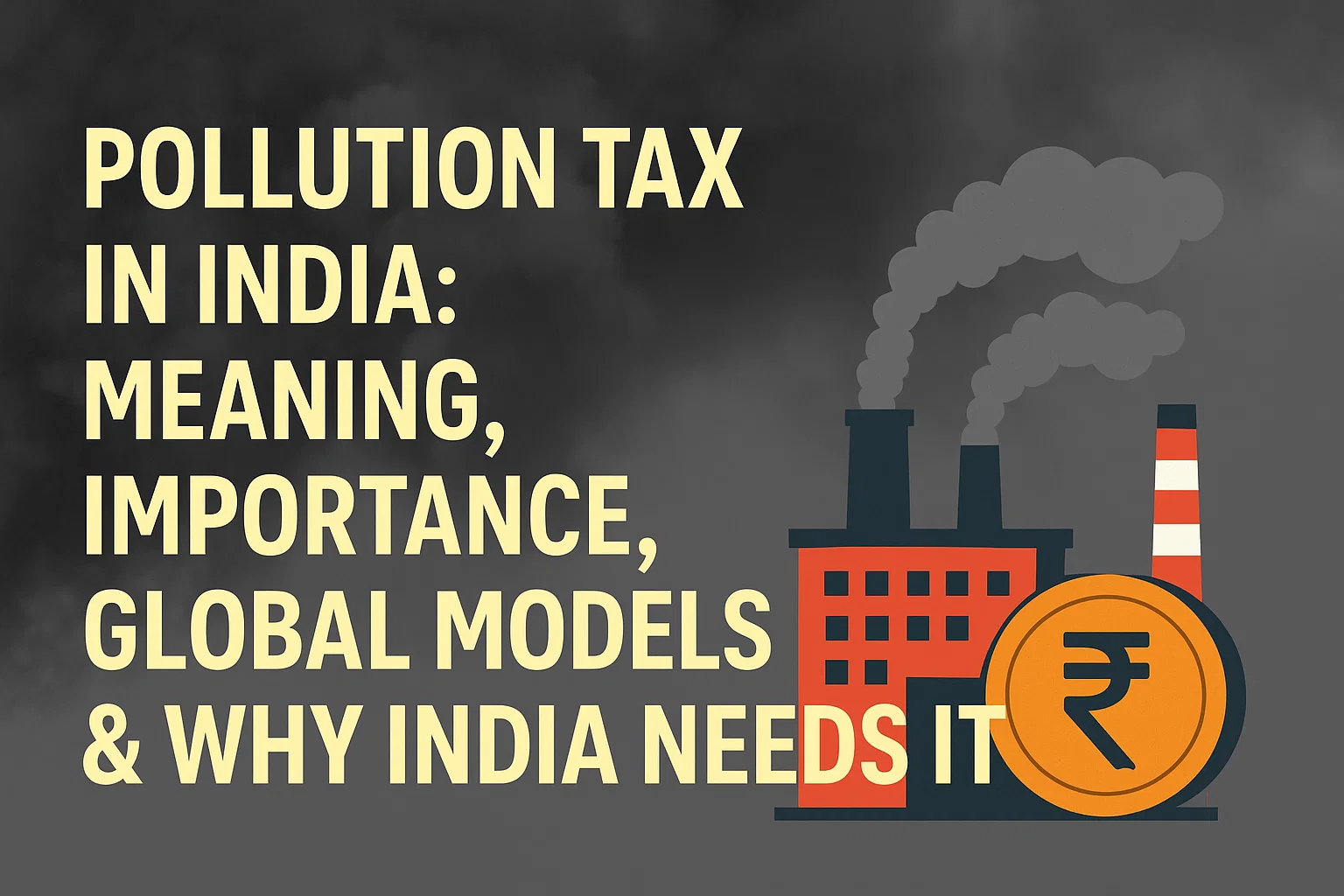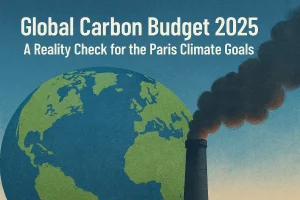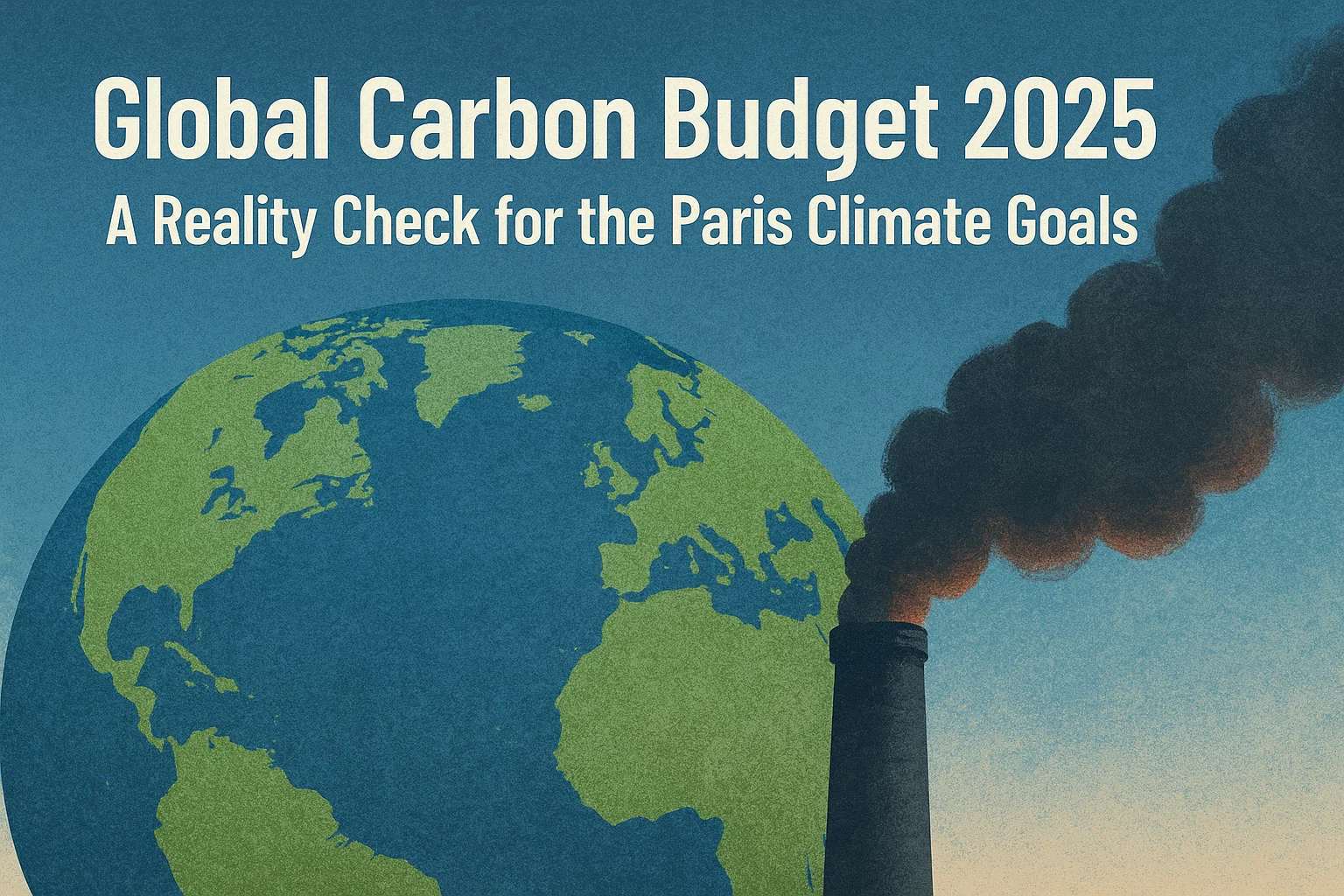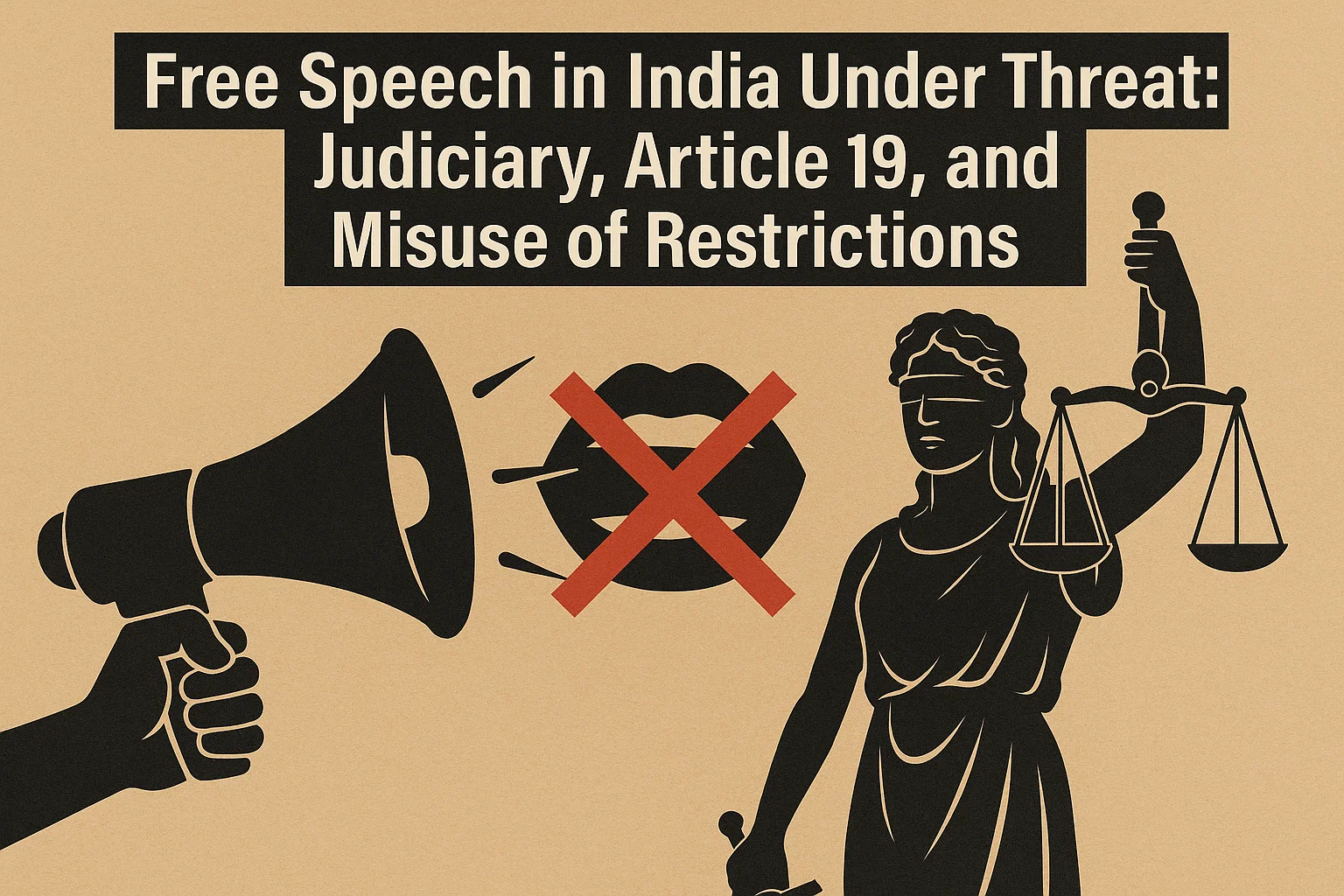Pollution Tax in India: Meaning, Importance, Global Models & Why India Needs It
Learn what a pollution tax is, why India urgently needs it, and how over 70 countries use carbon taxes and ETS systems. Explore benefits for revenue, environment, and climate commitments in this detailed analysis.
Pollution Tax in India: Definition, Need, Benefits & Global Practices
As India navigates a phase of declining nominal GDP growth, rising commitments to welfare expenditure, and limited space for further tax rationalisation, economists and policy experts are increasingly highlighting the need for innovative, stable revenue sources. Among these proposals, the idea of a comprehensive pollution tax stands out—not only as a fiscal tool but as an environmental and behavioural reform mechanism. As pollution levels rise and climate obligations tighten, a pollution tax could simultaneously strengthen public finances and improve environmental outcomes.
What Is a Pollution Tax?
A pollution tax, also called a Pigouvian tax, is a charge levied on activities that produce negative externalities—primarily pollution. The concept originates from economist Arthur Cecil Pigou, who argued that when private activities impose social costs, such as air and water pollution, the responsible party should pay a tax proportional to the harm caused.
A pollution tax typically operates through two channels:
1. Direct Tax on Producers
Industries with high pollution footprints—such as those classified under “red-category” sectors—pay higher taxes based on emissions intensity or environmental damage. This creates a disincentive to pollute and encourages investment in cleaner technologies.
2. Indirect Tax on Consumers
Consumers pay higher taxes on pollution-linked goods such as petrol, diesel, plastics, thermal power, and air travel. The objective is to discourage excessive consumption of polluting products and shift behaviour toward greener alternatives.
The goals of a pollution tax are threefold:
-
Polluter Pays: Ensuring those responsible for pollution bear the environmental and health costs.
-
Behavioural Change: Encouraging industries and consumers to adopt cleaner practices.
-
Revenue Generation: Providing governments with a new, stable revenue stream.
Why Is a Pollution Tax Crucial for India?
1. Severe Pollution Burden
India hosts 13 of the world’s 20 most polluted cities, and air pollution contributes to millions of premature deaths every year. Pollution taxes can reduce emissions while directly funding health and environmental interventions.
2. Urgent Revenue Needs
With slowing nominal GDP growth and increasing demands for welfare, infrastructure, and climate resilience, India needs new revenue avenues. A pollution tax is a stable, predictable option that reduces dependence on volatile sources like disinvestment or central bank transfers.
3. Climate Commitments
India’s commitments under the Paris Agreement and reiterated at COP30 require reducing emissions and transitioning to clean energy. Pollution taxes provide economic incentives aligned with these goals.
4. Behavioural Transformation
Taxes on fossil fuels, single-use plastics, and polluting industrial processes encourage:
-
Faster adoption of electric vehicles
-
Greater investment in renewable energy
-
Reduced consumption of carbon-intensive goods
5. Equity and Fairness
A pollution tax internalises environmental costs, ensuring polluters—industries or consumers—pay for the damage. This aligns with the global “polluter pays” principle and creates more equitable environmental outcomes.
Global Experience: Pollution Taxes and Carbon Pricing Worldwide
More than 70 countries and jurisdictions have adopted carbon pricing systems—either carbon taxes or emissions trading systems (ETS). Examples include:
-
European Union: The world’s largest ETS, covering power and industrial sectors.
-
China: National ETS launched in 2021 for the power sector.
-
Canada: Federal carbon tax combined with provincial systems like British Columbia’s carbon tax.
-
Japan: National carbon tax plus Tokyo’s cap-and-trade scheme.
-
South Korea: National ETS since 2015 covering major industries.
-
Mexico: Carbon tax and a pilot ETS.
-
United States: No federal system, but state-level ETSs like California’s cap-and-trade and the RGGI in northeastern states.
-
South Africa: Introduced a national carbon tax in 2019.
-
New Zealand: Operates a national ETS; Australia briefly ran a carbon tax (2012–2014).
These examples show that pollution taxes not only reduce emissions but also strengthen government finances, stimulate green innovation, and support long-term energy transition.
Subscribe to our Youtube Channel for more Valuable Content – TheStudyias
Download the App to Subscribe to our Courses – Thestudyias
The Source’s Authority and Ownership of the Article is Claimed By THE STUDY IAS BY MANIKANT SINGH



